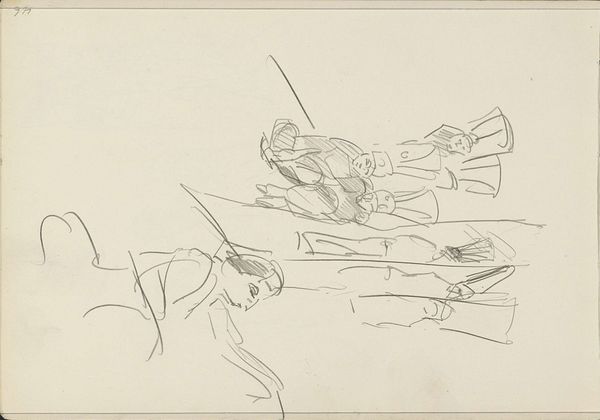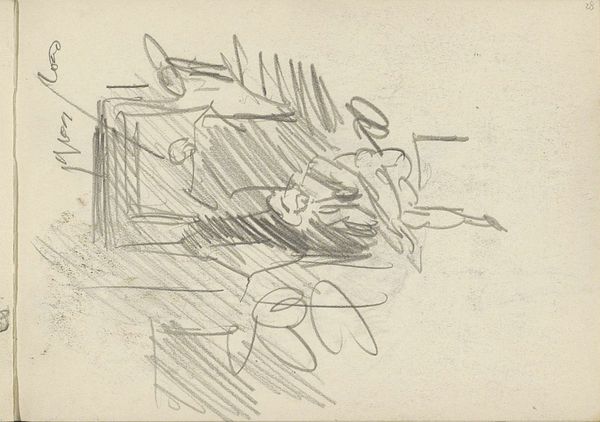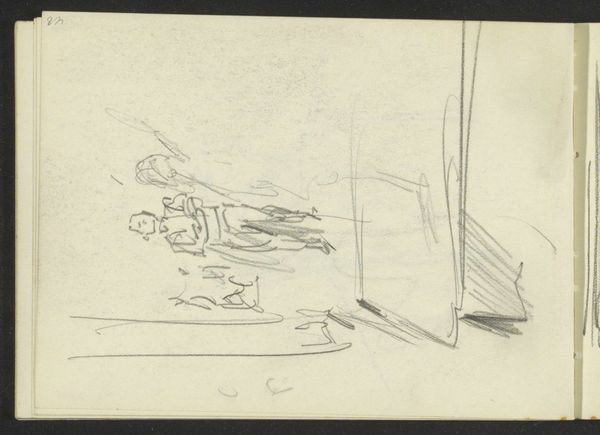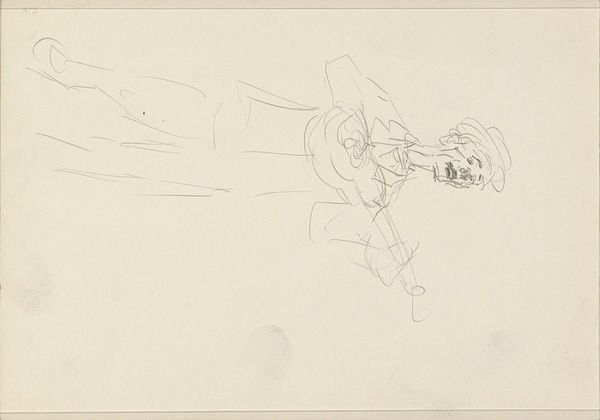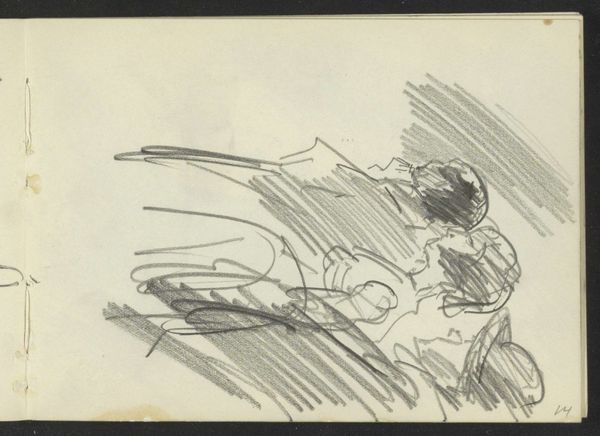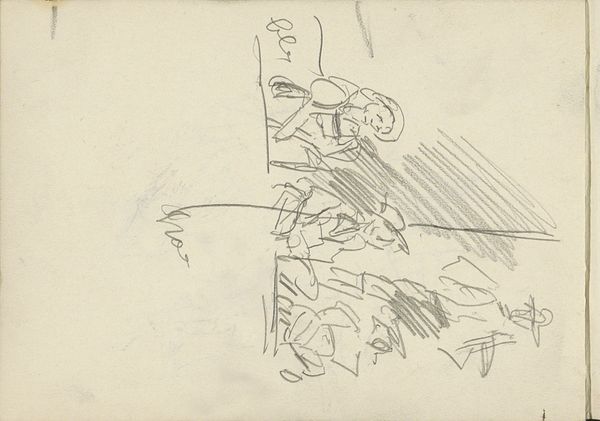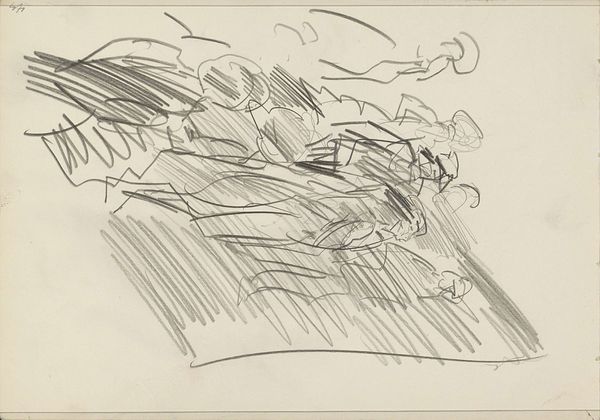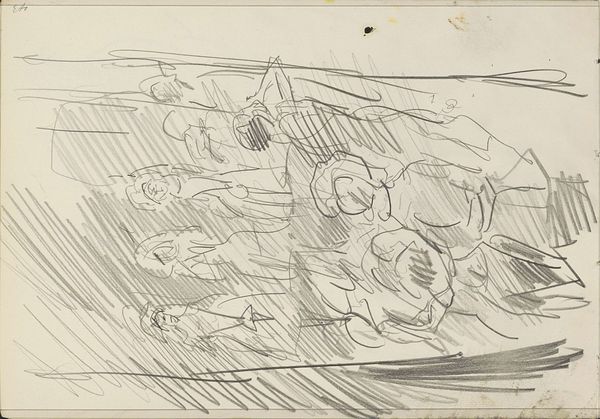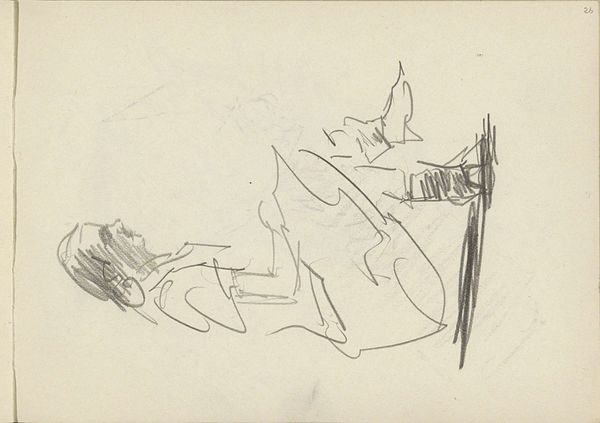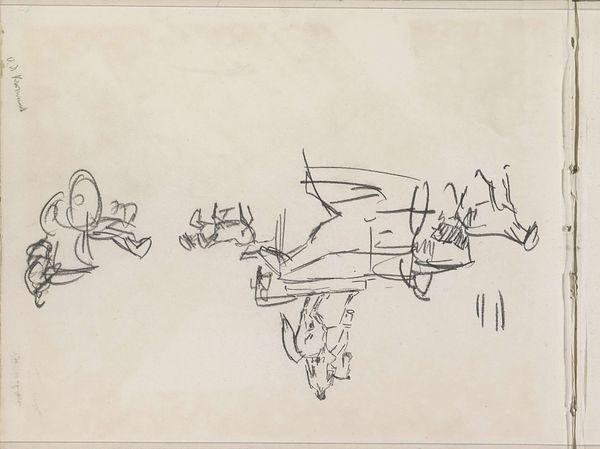
Copyright: Rijks Museum: Open Domain
Curator: Welcome to the Rijksmuseum. We’re standing before Isaac Israels’ “Studieblad met gitaarspelers,” or “Study Sheet with Guitar Players,” a work dating from around 1930 to 1934. It's rendered in pencil and ink, giving it a wonderfully immediate feel. Editor: Immediate is right! It looks like a page ripped right from the artist’s personal sketchbook. The figures are so loosely sketched, almost ephemeral, yet there’s a sense of capturing a fleeting moment. There is something unfinished that seems particularly vulnerable, even voyeuristic about it. Curator: Israels had a fascination with capturing everyday life, and that’s certainly reflected here. Study sheets like this allowed artists to rapidly explore form and composition. We can examine not just *what* Israels was drawing but also the process *how* and *why*. Here, Israels presents some women sitting and holding their guitars. It almost has an intimate quality like we're peaking into their lives. Editor: Definitely. And, thinking about the period, the interwar years, it prompts me to consider the position of women and leisure. Was guitar playing a means of expression, perhaps even rebellion, against the limited roles available to them? It raises so many questions. Did the guitar represent a path toward more freedom? Curator: That's a compelling reading. Social context is everything and musical expression can serve as an indication for greater expression within a woman's social and economic potential at that period of time. But the roughness also adds an aesthetic consideration, don’t you think? Editor: Absolutely. There's a raw honesty in the sketch-like quality. Each stroke exposes something, an intentionality, perhaps to evoke emotion? The fact that they are guitar players evokes performance of all types. Not just musicians in the 1930's but performing the ideal for their day to gain rights that even they, maybe, are just discovering. Curator: Yes, it truly collapses time and space into a few strokes. One final thought on it is in thinking of his own position as an artist during a shifting time in art history. Israels’ style, rooted in Impressionism, here takes on a modern sensibility in this sketchbook form of his creative work. Editor: This reminds me to be aware of everything happening around us. You never know who will take that inspiration and make artwork, or advocate to improve another life. Thank you. Curator: Thank you for sharing, goodbye.
Comments
No comments
Be the first to comment and join the conversation on the ultimate creative platform.
